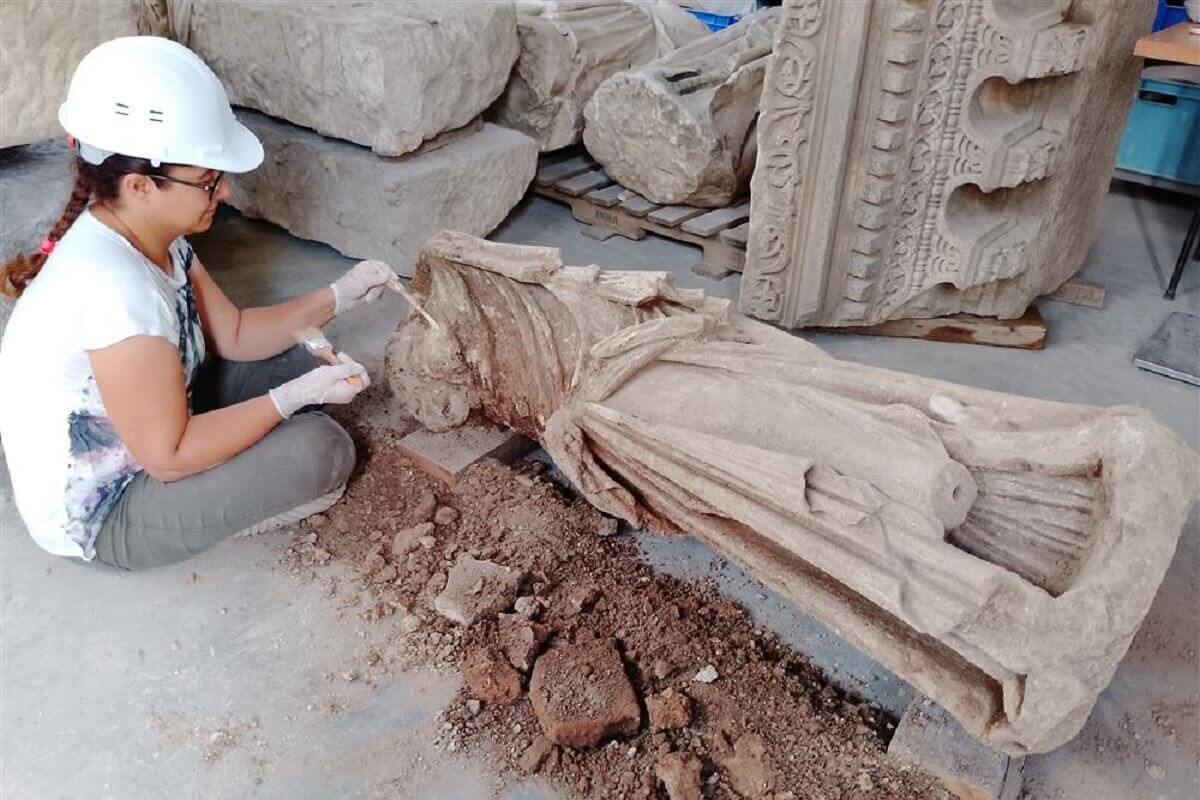
During archaeological excavations in the ancient city of Stratonikeia, located in the province of Muğla and known as the "city of eternal love and gladiators", a statue of the "Dancing Muses," estimated to be 2175 years old, was discovered.
This statue is the only original artifact from the Hellenistic period, while its copies made in the Roman period are known worldwide. Exact replicas of the admired "Dancing Muse" statue were found earlier in different locations: one in the Roman baths of the ancient city of Perge, and another on the island of Rhodes.
The statue depicts one of the daughters of Zeus and Mnemosyne and was created by Philiscus, a prominent sculptor of the 2nd century BC. Philiscus was known for his works in bronze, mainly creating statues of athletes and gods.
The find is an important testimony to Philiscus's work in Stratonikeia during the Hellenistic period.
The statue and its pedestal were found during excavations in the frigidarium of the Roman bath in Stratonikeia. The head and hands of the sculpture were missing, making this discovery even more unique.
After restoration, the statue will be displayed in the Muğla Museum.
It is worth noting that Turkey recently achieved second place in the ranking of countries with the most elements on the UNESCO Intangible Cultural Heritage lists, after adding four more cultural assets to these lists.
As reported by Turkey's Minister of Culture and Tourism, Mehmet Nuri Ersoy, at the 18th UNESCO Intergovernmental Committee meeting on the preservation of intangible cultural heritage held in Kasane, Botswana, it was announced that such elements of cultural heritage as "Mey/Balaban Craftsmanship and Performance", "Iftar and sociocultural traditions associated with Iftar", "Art of mother-of-pearl inlay" and "Art of tezhip" were included in the list.
This brought the total number of Turkish cultural heritage elements on the UNESCO lists to 30, placing the country second only to China, which leads the list with 43 elements.
- A stellar marvel 157,000 light-years away: Hubble telescope unravels the mysteries of ancient cluster NGC 2210
Hubble reveals the beauty of NGC 2210, a young globular cluster in the Large Magellanic Cloud







